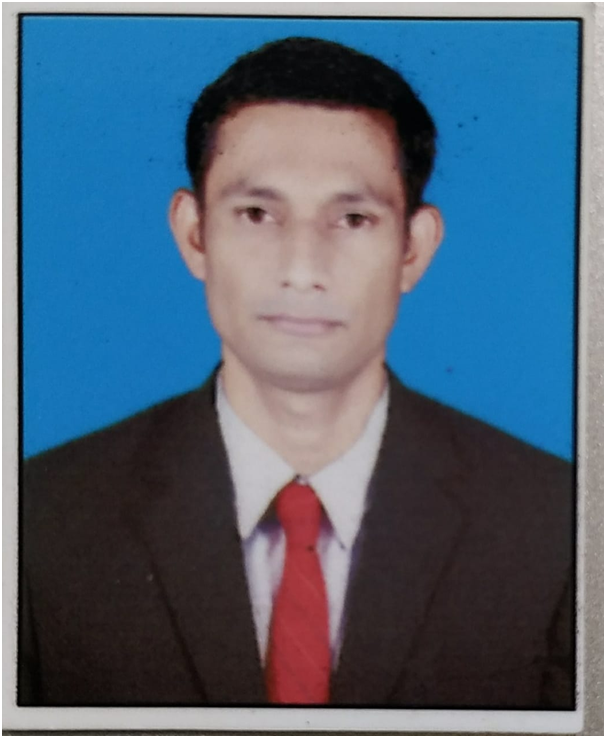Departmental Activity
Departmental Schedule
- Mon - Tues :
10.00 am - 05.00 pm
- Wednes - Thurs :
10.00 am - 05.00 pm
- Fri :
10.00 am - 05.00 pm
- 2'nd & 4'th Sat.
Open
- Sun :
Colosed

 About Department
About Department
Our Department |
 Programme Offered
Programme Offered
About Program
Our Courses
![]() Eligibility Criteria
Eligibility Criteria
 Syllabus
Syllabus
Teaching Syllabus
 Programme Outcomes
Programme Outcomes
PO-CO-PSO
| Course | Course Outcomes |
|---|---|
| General course outcomes: | • Know how & when technology is to be used. • Investigate & solve unfamiliar mathematical problems. • Investigate & apply mathematical problems & solutions in a variety of contexts related to science, technology, business & industry and illustrate these solutions using symbolic, numeric or graphic methods. • Realized that knowledge of subject in other faculties such as humanities & social sciences. • The skills of observations & drawing logical inferences from the scientific experiments & data. |
|
|
• To improve logical thinking. • Formulate and develop mathematical arguments in a logical manner. • Acquire knowledge and understanding of the advanced areas of mathematics. • Application of mathematics can be used in every sector like social science, all sciences business and other contexts. |
| Differential and vector calculus | • Define limit continuity, function, hyperbolic function • Find nth order derivative of the products of the powers of sines and cosines • Prove Leibnitz’s theorem. • State Rolle’s Theorem, LaGrange's mean theorem, Cauchy’s mean value theorem • Prove Taylor’s theorem • Define: Limit of a function of two variable continuity of a function of two variable at a point, homogeneous function. • State Euler’s theorem on homogeneous functions, total differentials, differentiate implicit function. • Define: Scalar and Vector valued point functions, directional derivative of point functions along co-ordinate axes. • Define: Gradient, Operator, Divergence and curl. |
| Integral calculus and vector calculus |
• Understand case of non-repeated linear factors, case of non-repeated linear or repeated linear factors, case of linear or quadratic non-repeated factors.
• Solve integration of sinnx, cosnx and reduction formulae for integration of sin-nx, cosnx.
• State fundamental theorem.
• Find areas of plane regions, length of plane curves, volumes and surfaces of revolution.
• Define line integrals, circulation, irrotational vector point functions, surface and volume integral
• Interpretation of Gauss theorem.
|
| Number Theory | • State and prove division algorithm, Find GCD • State Euclidean algorithm and Diophantine equation ax+by =c • State Fundamental theorem of arithmetic • Solve basic properties of congruences. State and Fermat’s and Wilson's theorem • Introduce Eulers phi-function, T and 6 • State Euler’s theorem Find the Mobius inversion formula. |
| Numerical Analysis | • State Bisection method, newton’s-Raphson method • Find finite differences, forward differences, backward differences, differences of a polynomial • Describe symbolic relation and separation of symbols • Calculate Newton’s formulae for interposition • Understand Lagrange’s interpolation formula • State Hermite’s interpolation formula • Calculate divided differences and their properties • State newton’s general interpolation formula • Use Least-squares curve fitting procedures • Understand fitting a straight line • Find Chebyshev polynomials • Find solutions of different linear system of equations • Find Numerical solution of ordinary differential equations |
| Abstract Algebra | • Understand sets, functions, integers • Define group • Understand subgroup, Normal subgroup, quotient groups • Define homomorphism and automorphism • Describe different types of rings • Understand vector spaces and modules |
| Mechanics | • Define Rigid body, forces, Equilibrium, statics • Understand complete theory of forces acting of a particle • Describe theory related with equilibrium of forces acting on a particle • Find forces acting on a rigid body • Understand centre of gravity • Define velocity and acceleration in terms of derivatives • Describe Newton’s law of motion, matter, Linear momentum, Angular momentum, work, energy. • Illustrate rectilinear motion, projectile Motion of projectile, projectile to pass through a given point • Understand theory related to central orbits. |
| Differential Equation |
• Explain meaning of differential equation
• Classifies the differential equations as per order and linearity
• Solve first order linear differential, exact differential & Bernoulli’s equations
• Solves the Linear differential equations with constant coefficients as well as variable coefficients of higher order.
• Solves the simultaneous and special form of differential equations
• Solves the first order partial differential equation find out partial derivatives.
|
| Geometry | • To understand geometrical terminology for planes, lines, spheres, cones and cylinder, the conicoid • Solves the problems on different concepts of every subtopic • Develop the theoretical formulae for different concepts |
| Integral Transform | • Student will able to • Explains the concept of Laplace transform. • Explains basic properties of Laplace transform. • Find Laplace transform of derivative integral, multiplication by t, division by t, unit step function of f(t). • Express inverse Laplace transform & develop all formulae • Solves linear differential equation using Laplace transform • Explain the special functions Beta & Gamma functions its transformations & solves the examples. • Student will able to • Solve linear as well as non-linear partial differential equations. • solves the partial differential equations of first degree and any order by methods Charpit’s Methods & Jacobie's Method. • Determine complementary function and particular integral of given partial differential equations • Solves partial differential equations of 2nd order • Classify the 2nd order partial differential equations in canonical forms. |
| Real Analysis |
• Define the concepts of sets, subsets, finite, infinite power, singleton’s sets
• Explains all sets operations
• Define functions as well as different types of functions
• Define real valued, complex valued functions as well as countable & uncountable set & study all existing sets.
• Define sequences & services
• Established theorems and solve problems related to sequences & series
• Explain concept of Jacobians & solve examples on these concepts.
|
| Ordinary Differential Equation – I | • Explain the linear differential equations with variable coefficient. Develop the theory related initial value problem i.e., existence & uniqueness theorems • Explain the concept of Wronskian as well as apply theoretical concept to solve the examples • Solves homogeneous equations with analytical coefficients • Solve Legendre equations • Study linear equations with regular singular points and solve examples on it. |
| Real Analysis | • Define concept of Metric space, limit in metric space. • Familiar with the concept of basic proof techniques & fundamental concepts such as connectedness, completeness & compactness. • Explain the Riemann integral & its properties solve examples on it. • Explain the concept of Fourier series & solve examples on it. |
| Ordinary Differential Equations -II |
Upon completion of the course, the students will be able to-
• Enlist and introduced to students issues in India administration • Analyze the causes of issues in India administration. • Developed research attitude among the students. • Describe the major parameters affecting the administration and society. • Describe the new devices in Administration as to resolve the issues. • Suggest the remedies and solution in resolving the issues through project. |
 Teaching Staff
Teaching Staff
About Our Staff
|
| ||||
|---|---|---|---|---|
| Sr.No. | Faculty Name | Qualification | Designation | View Profile |
| 1. | Mrs. Geeta Sharad Kawale | M.Sc(Math.) Ph.D (Appear) | Assisstant Professor & Head | Click Here |
| 2. | Dr. Jayashree Vinayakrao Patil | M.Sc(Math.) Ph.D (Appear) | Assisstant Professor | Click Here |
 Activity
Activity
Departmental Activity
![]() Departmental Activities
Departmental Activities
View Activities here..
 Alumini
Alumini
About our alumini
| |
 |
|
| |
|
| View Profile |
|
| |
|
| View Profile |
|
| |
|
| View Profile |
|
| |




 Physics, Chemistry & Mathematics for graduation.
Physics, Chemistry & Mathematics for graduation.



